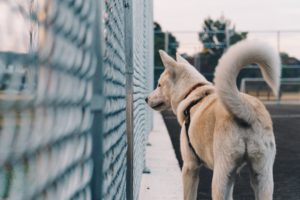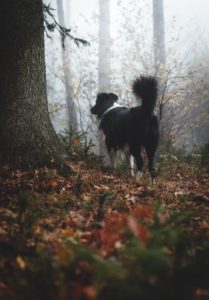How To Read My Dog’s Tail
It might not surprise you to learn that your Pooch’s tail is an astute communication tool. Many of us realize that Fido’s wagging tail is a sign of happiness and joy, but there is so much more we can interpret from her/his tail and body language.
Here are some communication decoding tips:
A Slow-Wagging Tail — A dog that is slowly wagging its tail is not necessarily a canine you should approach, especially if it’s not your dog. A dog displaying this behavior may be plotting something and calculating its next move, say the pet experts at insidepetshealth.com. But according to other pet experts at petmed.com, a wagging tail means a sign of willingness to interact but may not be a clue that a dog is friendly. “A wagging tail simply indicates that a dog is mentally aroused and engaged with what is going on in his environment, not how he will react to whatever is going on,” says Dr. Lisa Radosata, owner of Florida Veterinary Behavior Science.
Downward Tail — This tail position can mean your pooch is relaxed and comfortable around you. In fact, your dog may even wag its tail in this position, which can be interpreted as a peace offering. So be sure to shower her/him with lots of love and affection.
Limp Tail — This can be a sign that your pooch is suffering in some way. It can mean nerve damage or another underlying health issue. Your dog’s tail may even be dislocated, sprained or broken. A limp tail is always a red flag that your pooch needs to see a veterinarian right away to rule out any of the above.
Stiff Tail — A stiff tail accompanied by a wrinkled nose, open mouth and raised hackles can be a sign to give a dog you don’t know well a wide berth. It is common among active dogs including Labrador Retrievers and Huskies, representing confidence and enthusiasm. There likewise may be something in their surroundings causing them to become aroused and alert.
Full Body Wag — I love it when my pup greets me this way! It is a sign that he is very happy to see me. Experts agree that it is safe for you to approach even a dog you don’t know if it is displaying a full body wag.
Tucked Tail Between Legs— This tail position is a way for your pooch to express stress and worry. A dog that does this is uncertain about the situation it finds itself in or a person it may have just met.
It also an indication that a dog is afraid. For a puppy it can mean it is feeling overwhelmed in a new environment.
If your pooch’s tail is curly or stubby such as in Bulldogs, Boston Terriers, Corgis, Bobtails and Cocker Spaniels there is still a way to interpret tail messages. In this case, pay attention to the base the tail because that is where all movement is based.


